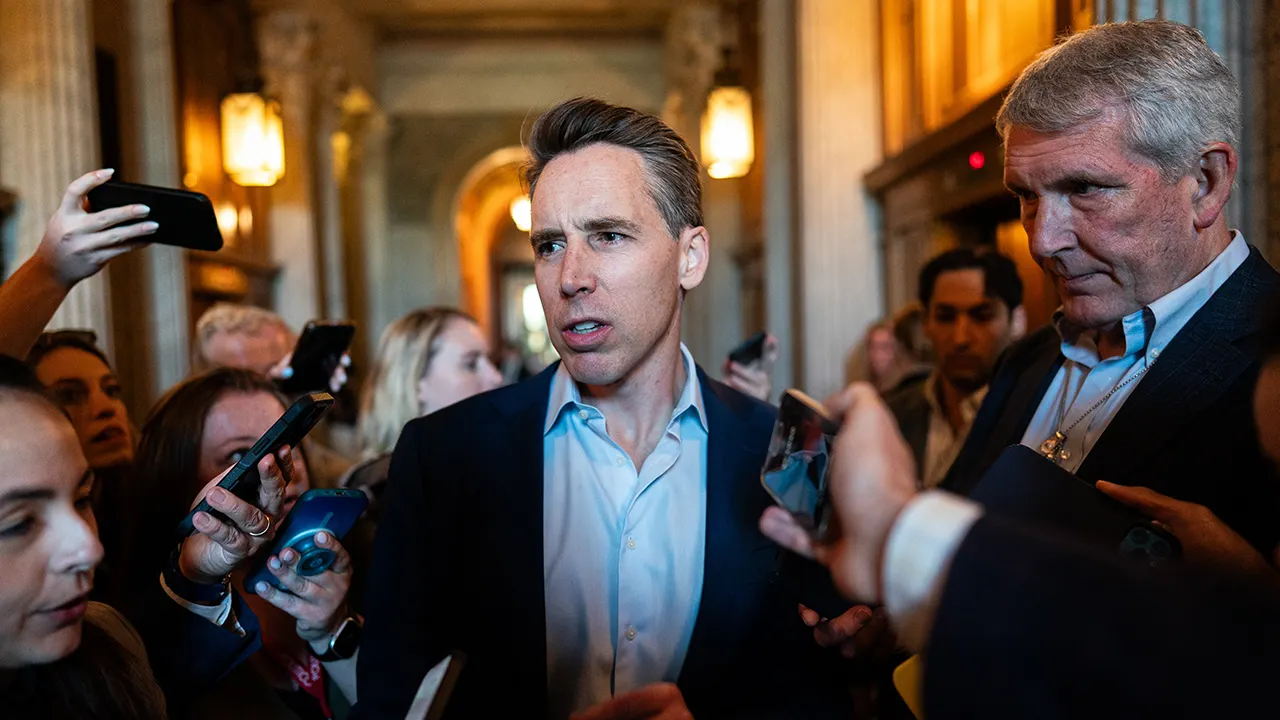California
Shooting attempt on 'Khalistan' activist raises fears among Northern California Sikhs

Until recently, Satinder Pal Singh Raju was a mostly unknown figure in Northern California’s large and sprawling Sikh community.
From his home in the small city of Woodland, he worked as a trucker — a popular job for Sikhs — took care of his wife and kids and was a regular at Gurdwara Sahib West Sacramento, the temple where he’s prayed since emigrating from India nearly 19 years ago.
In his free time, he volunteered to travel Northern California and Canada to organize educational events and symbolic voting drives to establish a long-desired independent nation, Khalistan, that Sikh activists want to carve out of India’s Punjab region. India considers the decades-old global separatist movement to be a terrorist operation because of its territorial ambitions and violence committed by some of its offshoots.
On Aug. 11, when Raju was making a late-night food run with two friends, someone fired at his pickup truck as it traveled down Interstate 505 in rural Yolo County. At least four bullets struck his vehicle, police said. Raju and his friends — who are also Sikh activists involved in the separatist movement — were not injured, although their car veered off the road, coming to rest near a drainage ditch and a two-story stack of hay.
“They tried to kill me,” said Raju, 44.
In the last two weeks, news of the shooting has reverberated across Indian media and Punjabi-language radio shows in North America as fears grow among California Sikhs about recent threats against them because of their political activity in opposition to the right-wing, nationalist Indian government. In recent months, Sikh leaders at several temples across Northern California have reported anonymous calls and text messages that threaten them in Hindi for pro-Khalistan activities.
There has been debate in the Sikh community about whether the attack on Raju and his passengers could be linked to broader transnational incidents in Canada and the U.S. in which authorities have accused the Indian government of having links to the fatal shooting of a Sikh activist in British Columbia and a plot to kill another in New York.
India has denied all allegations.
Local law enforcement in Woodland and the California Highway Patrol, which responded to the 911 call, have not commented on the motivation for the shooting and publicly released information about it on Aug. 22, 10 days after the incident. In a statement, the FBI said it “continues to collaborate” with the CHP on an investigation and “takes all acts of violence seriously.” The Indian Embassy in Washington, D.C., did not reply to questions from The Times.
Activists targeted
The Sikh Coalition, a U.S.-based civil rights group, said in a statement that the Yolo County incident, while under investigation, “underscores the continued threat of Indian transnational repression.”
The activists targeted in the Canada and New York cases were involved in a group called Sikhs for Justice. The organization promotes nonbinding referendum votes across the globe for the Sikh diaspora to express support for Khalistan, which means “land of the pure” in Punjabi. Voting events this year in Sacramento and San Francisco attracted tens of thousands of Sikhs.
In May, Canadian police arrested three Indian nationals residing in Alberta in connection with a June, 18, 2023, shooting that killed Sikh leader Hardeep Singh Nijjar — a close friend of Raju’s — as he stood outside his temple.
The three suspects — as well as a fourth alleged associate who was previously arrested — appeared in court this month on charges of first-degree murder and conspiracy to commit murder. The trial was delayed until October. The Royal Canadian Mounted Police — Canada’s national police force — did not disclose how it found the men. Prime Minister Justin Trudeau has said Canadian intelligence agencies were looking into “credible allegations” of possible Indian government involvement.
India has said that Canada has shared no evidence to back its allegations of government involvement. It instead accused Canada of giving “shelter” to extremists.
In November, the U.S. government alleged in a federal indictment that India paid a hit man — an undercover agent connected to the Drug Enforcement Agency, it turned out — to kill a Sikh activist in New York who is a lawyer and spokesman for Sikhs for Justice. In the indictment, the U.S. accused an unnamed Indian official of working with a known international narcotics trafficker to hire the fake hit man for $100,000. The trafficker was arrested in the Czech Republic and extradited in June to New York. He has pleaded not guilty in federal court ahead of a September trial.
India has said its investigation into U. S. charges found that “rogue” agents of the Research and Analysis Wing, India’s spy agency, were operating without government approval.
Sikhs vow to continue
Activists brush off the denials and said they remain unflinching in their commitment.
“They lie,” said Gurpatwant Singh Pannun, a lawyer and spokesman for Sikhs For Justice who has been promoting Raju’s case. Pannun is the New York resident that the U.S. government said India tried to kill.
“If a bullet and death is the price to pay for Khalistan, that is what we will face as Sikhs,” said Pannun, who produces YouTube shows from his Astoria, Queens, office where he rails against Indian Prime Minister Narendra Modi.
He’s now turned his attention toward Raju, who has become somewhat of a hero in the tight-knit community of Sikhs who organize for Khalistan.
For Raju, the shooting has emboldened his activism.
“What more is there to but keep on going?” he said. “We can’t stop now. We can’t be scared.”
Not all of of his co-activists agree with Raju’s allegations of a possible Indian plot against him.
“We don’t really know what happened. It could be something else,” said Bobby Singh, a 24-year-old Khalistan organizer in Sacramento who said he knows Raju from local pro-Khalistan rallies. “Still, we demand a full investigation.”
Decades-long strife
Sikhs number about 500,000 in the U.S., the third-largest population outside of India after the United Kingdom and Canada. About half of U.S. Sikhs live in California, where their presence in the Bay Area, Stockton and Sacramento goes back to the late 19th and early 20th centuries.
While the most ardent activists for Khalistan, such as Raju, make up a small group, support for the movement is widespread among Sikhs in the United States. Posters and prayers at temples regularly cite the envisioned Sikh nation.
Many, like Raju, point to modern Indian history as the reason why.
Now 44, he was a young boy growing up in the Punjabi city of Jalandhar during a peak of strife between Sikhs and the Indian government.
In 1984, Indian Prime Minister Indira Gandhi ordered a siege on separatists occupying the Golden Temple in Amritsar, the holiest site in Sikhism. In response, her two Sikh guards assassinated her. Mobs went rampage around Delhi, killing Sikhs, often with government approval. Some estimates put the deaths in the tens of thousands. In another incident a year later that was tied to the violence, militants blew up an Air India flight over the Atlantic, killing 329 people.
Raju has friends and family back home who saw the violence of that era, he said, and knows people in India who faced lingering discrimination against Sikhs over the decades.
That — and the opportunity to work and live in America — brought him California when he was 25. Raju moved in with family in Woodland and got a job in trucking. He briefly quit to run a Punjabi grocery store before returning to trucks a decade ago. For much of his working life, Raju has been on Interstate 5, hauling dry goods from California to Oregon and Washington state.
Growing activism
“I was not very political,” he said. That was until 2016, when friends from the West Sacramento temple recruited him to volunteer for Sikhs for Justice. The growing group had ambitions to launch voting drives for Khalistan across Sikh population centers from London to Australia.
Raju would be in charge of educating Sikhs about the process — a way to show global Sikh support for the nation they seek to establish — and helping with voting centers in California and Canada. In WhatsApp groups and in-person gatherings, he got to meet Sikh activists who crisscrossed the globe in support of the cause.
It was a part-time hobby until last year. That’s when his friend, Nijjar, was shot dead ahead of that region’s vote.
“I was mourning,” Raju said. He took time away from trucking to spend three months in Surrey, Canada, a suburb of Vancouver, to organize the voting referendum. When Sikhs came together in San Francisco in January for a Khalistan vote, Raju was there. He joined in Sacramento, too, when a vote took place in April. Raju was in Calgary, Canada, until voting there concluded last month.
Unlike some higher-profile activists, Raju never received threats. But he suspects that his increasing visibility through his travels, including photos where he posed with Nijjar, put him on the radar of those opposed to his work.
The night of the shooting
During the day on Aug. 11, he said, he was at home in Woodland with two friends from the Khalistan movement who are less involved than him and asked not to be identified out of fear for their safety. Raju had spent the day playing with his young children before talking late into the night with his associates.
Hungry, they got on the road to drive south on I-505 for Vacaville, where BJ’s Restaurant & Brewhouse was open until midnight, Raju said.
His friend was driving Raju’s Dodge Ram 1500. Raju was in the passenger seat and the other friend was in the back. About 11:30 p.m. they noticed a car, possibly a white Honda Civic, following them closely, Raju said.
The Honda pulled to the passenger side of the truck, Raju said, and someone — he didn’t see who it was — began shooting. The three friends ducked and the car rolled into a ditch. Raju said they got out and briefly hid behind bales of hay, still visible Thursday afternoon.
“I’m thankful I survived,” said Raju. “Our religion is one of peace. But we also have to fight for our rights. So we will keep on going.”
Kaleem reported from Los Angeles and Garrison from Woodland. Staff writer Richard Winton contributed reporting.

California
Did you get a scary text claiming to be from the California DMV? What to know about scam

Tips: How to identify a phone or email scam
Here are some tips from Fort Collins Police Services on how to identify an email or phone scam.
Sady Swanson, sswanson@coloradoan.com
A new wave of scam text messages impersonating the California Department of Motor Vehicles prompted the agency to alert the public not to comply with the threats or offers of discounted services.
The text messages claim the recipients have unpaid tickets and threaten things like prosecution, suspension of vehicle registration and revocation of driving privileges or offer discounted registration fees, the division stated in a June 4 news release.
The text messages are written as if they were official communication from the division to entice the recipient “into clicking malicious links and divulging personal or financial information under the guise of settling non-existent violations,” the division stated in the news release.
“The DMV does not offer discounts on vehicle registration renewals and will never ask for payment or personal information through unofficial channels,” the department said in a press release.
What the fraudulent text messages typically include
The California DMV says that exact phrasing can vary but the scam texts usually:
- “State they are from the ‘California DMV’ or a similar official-sounding entity.”
- “Allege outstanding unpaid tickets or violations.”
- “Threaten imminent legal action, such as prosecution.”
- “Warn of pending suspension of vehicle registration and/or driving privileges.”
- “Contain a link to a fake website to ‘resolve’ the issue or make a payment.”
- “Offers of discounted DMV services.”
Ways to prevent being scammed if you receive a suspicious text claiming to be from the DMV
“The safest way to renew your vehicle registration is directly through the official DMV website,” said DMV Director Steve Gordon. “We never conduct official business through social media or other unofficial channels.”
The California DMV offered this guidance:
- Don’t click on links, as they “often lead to fake websites designed to steal your information,” the California Division of Motor Vehicles warned.
- Don’t share personal or financial information, including your driver’s license number, Social Security number, credit card information, or banking information.
- Don’t reply.
What to do if concerned about the status of your driver’s license, vehicle registration or potential tickets
Contact the California Department of Motor Vehicles directly through its official website, at https://www.dmv.ca.gov or call the DMV at 800-777-0133.
“If you have not engaged in any activity that would result in a ticket or penalty, it is almost certainly a scam,” the news release stated.
If you get one of the fraudulent texts, you can report it to the FBI’s Internet Crime Complaint Center, www.ic3.gov, or the Federal Trade Commission, reportfraud.ftc.gov.
California
1978 cold case murder of California teacher solved after killer’s relative confesses

This article mentions suicide. If you or someone you know is struggling or in crisis, help is available. Call or text 988 or chat at 988lifeline.org.
The 1978 cold case murder of a California high school teacher who was stabbed to death has been solved nearly five decades later, officials confirmed.
Diane Peterson was found dead on a hallway floor near her classroom at a San Jose high school on June 16, 1978, according to the Santa Clara County District Attorney’s Office. She was 26. The killing happened on the day after summer break began when teachers returned to campus to finish cleaning their classrooms, the district attorney said.
The San Jose Police Department can now confirm that Harry “Nicky” Nickerson stabbed Peterson when he was 16, after a family relative witness came forward earlier this year. The district attorney’s office said Nickerson confessed to the murder to the family member and was seen carrying a knife with the phrase “Teacher Dear” written on it.
“When we hit a brick wall and we reached a dead end with forensic evidence, it came down to old school police work and our detectives interviewing people and trying to get answers from people. And we finally got the answer we were looking for,” Deputy District Attorney Rob Baker said at a news conference Monday, June 2.
The district attorney’s office said a family member of the victim thanked investigators for continuing to search for answers, adding that “Diane was a beautiful and wonderful person who is missed dearly.”
What happened to Harry Nickerson?
Nickerson died in from a self-inflicted gunshot wound in 1993, according to the district attorney’s office. While Nickerson was never convicted in Peterson’s death, he was among the prime suspects.
A 1978 booking photo of the teen appeared very similar to a composite sketch eyewitness accounts shared, the district attorney’s office said.
“He denied being involved. He said he didn’t own a knife and the case was basically cold,” Baker said, adding that Nickerson accused officers of trying to “pin” the crime on him.
In 1983, a family of a student at the school claimed they saw Nickerson kill Peterson, but the student later denied making the statement, per the district attorney. The next year, a witness told police that they saw Nickerson carry out a drug deal that implicated the teen in the murder.
Following Peterson’s death, Nickerson was arrested and convicted of various charges including armed robbery, assault with a deadly weapon and kidnapping, the district attorney’s office said. In 1984, he was shot and critically injured during a drug robbery, but no charges were filed in that case.
Why did the witness just come forward?
The family relative, whose identity the district attorney did not share, did not come forward for decades out of fear of retaliation from Nickerson or his family, Baker confirmed with USA TODAY.
“After exhausting all other investigative leads, including extensive forensic DNA analysis, homicide detectives reached out to the relative, who revealed the secret they had been keeping for nearly 50 years,” Baker told USA TODAY. “According to the detectives, it was an emotional moment for the relative.”
The witness was not involved in Peterson’s killing in any capacity and did not help Nickerson evade arrest so criminal charges could not be filed, Baker said.
“This marks the end of a terrible and tragic mystery,” District Attorney Jeff Rosen said in a news release. “Ms. Peterson would have been a senior citizen today if she had not crossed paths with this violent teenager. I wish she was. I am pleased that we have solved this case, even though the murderer is not alive to face justice. I wish he was.”
California
California boosts wildfire risk prevention through CAL FIRE grants and emergency actions

California state government responds to wildfire risk with new prevention investments
The Press Office of Governor Gavin Newsom has reported that California has awarded nearly $72 million through CAL FIRE to support regionally based land management projects aimed at addressing wildfire risk and forest health.
The announcement comes as the U.S. federal government reduces resources for the U.S. Forest Service, creating uncertainty ahead of peak fire season.
According to the Governor’s Office, 12 grants are being distributed to support large-scale forest management initiatives, enhance long-term carbon storage, and improve ecosystem resilience across California.
New projects fast-tracked under state emergency proclamation
The Governor’s Office reported that California has approved 13 wildfire safety projects on nearly 7,000 acres since the April 17 activation of the wildfire prevention emergency proclamation.
The state stated that these projects involve natural resource managers, tribal entities, fire districts, and other partners, and follow recent work on over 2 million acres in previous years.
Fast-track approvals began within one week of the application window opening in mid-April.
Forest Health Program grants target large landscapes and multiple jurisdictions
CAL FIRE said its Forest Health Program is funding projects of no less than 800 acres across multiple landownerships and jurisdictions to support fire prevention and ecological restoration.
Alan Talhelm, Assistant Deputy Director of Climate and Energy at CAL FIRE, said: “CAL FIRE is proud to award Forest Health grants that will increase the wildfire resilience of California’s landscapes and communities and help restore ecosystems following wildfire.
“These grants will provide our partners around the state with funds to complete projects that support local economies, protect watersheds, increase public safety, and sequester carbon.”
The agency noted that projects include fuel treatments, habitat protection, reintroduction of fire, and support for low-income and tribal communities.
Selected projects include fuels reduction and ecological restoration
According to CAL FIRE, project highlights include 1,288 acres of fuels reduction by the Upper Mokelumne River Watershed Authority and 867 acres treated by the Redwood Forest Foundation, Inc., creating forestry jobs and youth opportunities.
Other projects include prescribed fire on 450 acres in Humboldt County under the Prosper Ridge Community Wildfire Resilience Project and 2,917 acres in Scott Valley focused on tree health and carbon sequestration.
The state emphasized that these initiatives are being monitored to ensure adherence to environmental protection standards under the new Statewide Fuels Reduction Environmental Protection Plan.
Early action budget allocates $170 million for wildfire resilience
The Governor’s Office reported that $170 million in voter-approved funding has been made available through state conservancies for wildfire resilience work as part of the 2025 early action budget.
The funding is supported by an executive order signed by Governor Newsom to streamline approvals for these projects under the March 1 State of Emergency.
These measures build on previous years of accelerated investment in fire safety infrastructure, forest management, and community preparedness.
Aerial firefighting and technology capacity expanded
Governor Newsom recently announced the addition of a second C-130 Hercules airtanker to California’s fleet, which his office described as the largest aerial firefighting fleet in the world.
CAL FIRE has also increased its deployment of Uncrewed Aerial Systems and implemented artificial intelligence tools to assist with fire detection and response.
These technological tools are part of broader state strategies to detect fires faster and allocate response resources efficiently.
Transparency and data tools support wildfire planning
The Governor’s Task Force has launched an Interagency Treatment Dashboard, which the state said provides public access to treatment data across public and private lands.
According to the Governor’s Office, the dashboard helps track progress, inform planning, and support coordination between federal, state, and local agencies.
The dashboard is part of a broader move to improve transparency in forest management and wildfire mitigation efforts statewide.
California boosts wildfire risk prevention through CAL FIRE grants and emergency actions: Summary
California has awarded nearly $72 million through CAL FIRE to support wildfire risk reduction.
The announcement was made by the Press Office of Governor Gavin Newsom.
Twelve large-scale projects are being funded through the Forest Health Program.
The state approved 13 additional projects under its wildfire emergency proclamation.
These approvals follow treatment of 2 million acres in previous years.
Projects include fuels reduction, prescribed burns, and ecological restoration.
Funding comes from the Timber Regulation and Forest Restoration Fund and California Climate Investments.
Governor Newsom signed an executive order to speed up project approvals.
An early action budget includes $170 million for wildfire resilience.
California added a second C-130 Hercules airtanker to its firefighting fleet.
CAL FIRE is using Uncrewed Aerial Systems and AI for fire detection.
A public dashboard was launched to track wildfire resilience work.
Over 2,200 landscape health projects are complete or underway.
-

 Movie Reviews1 week ago
Movie Reviews1 week agoMOVIE REVIEW – Mission: Impossible 8 has Tom Cruise facing his final reckoning
-

 Politics1 week ago
Politics1 week agoTrump honors fallen American heroes, praises God in Memorial Day address: 'Great, great warriors'
-

 Politics1 week ago
Politics1 week agoTrump admin asking federal agencies to cancel remaining Harvard contracts
-

 Culture1 week ago
Culture1 week agoCan You Match These Canadian Novels to Their Locations?
-

 Technology1 week ago
Technology1 week agoThe Browser Company explains why it stopped developing Arc
-

 News1 week ago
News1 week agoHarvard's president speaks out against Trump. And, an analysis of DEI job losses
-

 News1 week ago
News1 week agoRead the Trump Administration Letter About Harvard Contracts
-

 News1 week ago
News1 week agoCharles Rangel, Former New York Congressman, Dead at 94














